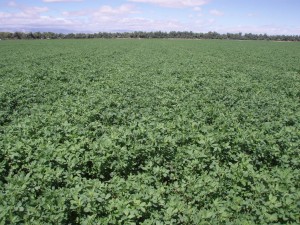Roger Johnson and his family have farmed an 80-acre plot just outside the western city limits of Hoxie, Kan., for years under flood irrigation. Even while using all of the 800 gallons per minute available, it was necessary to split the 80-acre piece in two and farm different crops to manage the water.
“We always had problems getting water through the field,” Johnson explains, “and many times the crop we produced would be very good on one end of the field and nonexistent at the other. I remember before we installed subsurface drip irrigation (SDI) on the field, one year we made 165 bushels of corn there.”
In 2012, a very dry year even in country that expects only 15 to 18 inches of rainfall annually, Johnson and his brother, Bob, and son, Heath, binned 220 bushels per acre on the 80-acre field by applying water at a 600-gallonper- minute rate—75% of the well’s capacity—with subsurface drip irrigation. This past year, that same field produced a 79-bushel soybean crop.

